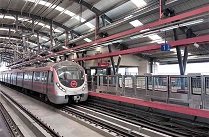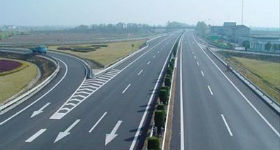Is it worth investing around Pune’s new Airport?
 Universally airports make substantial infrastructural developments around themselves which lead to economic growth and increase in real estate demand.
Universally airports make substantial infrastructural developments around themselves which lead to economic growth and increase in real estate demand.
The existing Pune airport has seen significant changes in last 12 months and the air traffic is on an upward trend due to IT, automobile and manufacturing industries.
Pune being the educational hub, many foreign and local students come to Pune for education. Therefore, a new airport is already a hot topic for the real estate industry and Purandar captivated everyone’s attention already.
Work on the proposed Pune International Airport will start, as the Centre gave a green signal for the project on April 30. The final decision came after a meeting between the officials of the Maharashtra Airport Development Company Limited (MADC) officials and a directing committee appointed by the Central government. On May 8, the Ministry of Civil Aviation also gave the project a site clearance.
Purandar airport to be named as Chhatrapati Sambhaji Raje International Airport and the project will be developed at an approximate cost of Rs 14,000 crore.
The new airport will be spread over 2,400 hectares of land out of which 1,300 hectares belong to the government. This project will cover seven taluka villages in Purandare tehsil – Pargaon Memane, Rajewadi, Waghapur, Ambodi, Pisarve, Rajodi, Jejuri.
It is situated 45 kilometers from the city center, the upcoming airport will run both international and domestic operations. The airport will be developed on a public-private partnership (PPP) model.
The airport will have two parallel airstrips or runway covering a length of four kilometers. It will be connected via six different routes, including National Highway – 4 and National Highway – 17. There are talks going on to provide a Metro link from Bhosari to Purandar airport.
Investment opportunities:
With the new airport coming up, the demand for residential and commercial properties is going to be higher in Purandar and adjoining localities near the airport like Bibvewadi, Saswad, Dhanori and Bhosle Nagar will see an upward trend in housing demand.
Proposed metro connectivity will be an added advantage to the infrastructural development which is likely to increase new employment opportunities and real estate development in Pune.
According to real estate expert, long-term investment in these areas seems to give a potentially high return for investors who are planning invest here.
Ample land parcel in the area surrounding the airport has already lured many developers and investors. Social infrastructure is set to improve and thus in the initial stage, the neighborhood is a perfect place to park your money for higher returns in the coming days. The locality will qualify as a location where buyers can secure a good rental income or a perfect second home destination.



